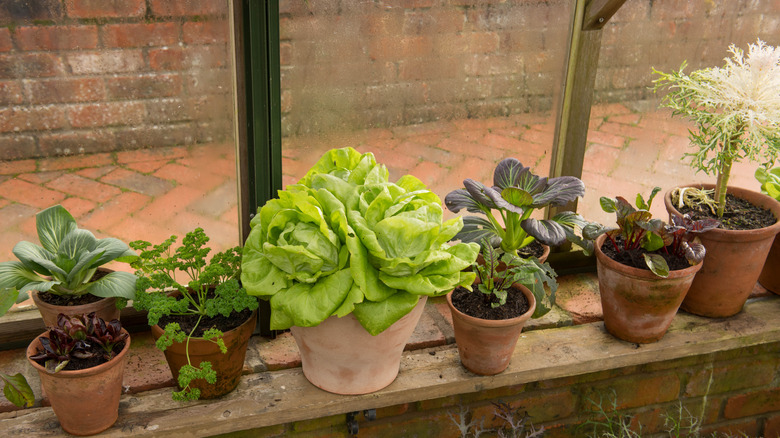The Common Sandwich Ingredient You Can Grow Indoors (Even During Winter)
We may receive a commission on purchases made from links.
Simply assembling your favorite sandwich is satisfying. Yet why not add to the intrigue by using homegrown ingredients? Not only will homegrown veggies lend a zippier flavor, but come packed with more nutrition, too. And while you might think it's necessary to have outdoor access, you could sprout lettuce indoors with year-round availability.
To help explain the cultivation of this common sandwich ingredient, Food Republic is fortunate to have guidance from Angelika Zaber — the lawn care specialist and gardening expert with Online Turf. To start, she recommended selecting the ideal vessel and location. "For lettuce to thrive indoors, it needs full sun, flat, shallow containers with good drainage," said Zaber. Think places like a south-facing windowsill or an especially sunny countertop. And if your residence is dim, it's even possible to use grow lights to have lettuce.
With the growing vessel and location secured, consider the soil. Zaber recommended getting "a planting mix that's specifically made for seed starting." So purchase a bag of well-rated Seed Starting Mix on Amazon to guarantee ideal conditions. And don't forget to buy trusty lettuce seeds of your favored variety. With materials assembled, only the planting and patience await.
Grow indoor lettuce in only a few weeks
Growing lettuce isn't difficult: It's Martha Stewart's suggestion for beginners. You'll want to start by adding the soil to your pot, then add a small quantity of water to wet the mix. Lightly bury some lettuce seeds, and you're set. To ensure optimal growth, Angelika Zaber explained that you'll need to keep your home's temperature between 50 degrees Fahrenheit and 75 degrees Fahrenheit. "If it's higher, the lettuce may end up bolting prematurely, causing it to go bitter, or the seeds may not germinate at all." When a plant bolts, it sends up a stalk to produce flowers, which takes nearly all of the lettuce's energy to do and signals its death.
After only a few days from sowing, look out for seedlings — a fortunate sign. Then, while the plant's still growing, add more lettuce seeds to another planter about every week, thereby increasing the frequency of your harvests. The entire process goes along surprisingly swiftly: "Indoor lettuce is usually ready to harvest after as little as three to four weeks," noted Zaber.
If your lettuce looks yellow or starts to wilt, it's not getting enough sunlight. In ideal conditions, the leaves should stand straight: Zaber explained they're ready to eat when "around 4 inches tall." So follow such growing tips, and you'll undoubtedly make the best BLT sandwich imaginable.


